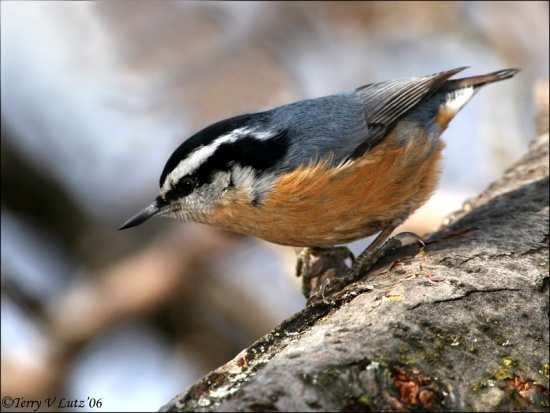- Sitta canadensis
Identification
Male Red-breasted Nuthatches have a black crown and nape. The lores, the supercilium, and the sides of the mantle are white. A black eyestripe broadens backward to the sides of the mantle. The chin, cheeks, ear coverts, and sides of the upper neck are white. The upperparts, lesser and median coverts, and central tail feathers are gray-blue. The outer 4 tail feathers have white centers, and the outer 3 have gray-blue tips. The primaries, secondaries, tertials, and alula are dark gray-brown. The lower neck, breast, flanks, belly, vent, and undertail coverts are rusty-cinnamon. The upper mandible is black, the lower is pale gray, and the legs and feet are dusky. Females are similar to males, but the crown and nape and eyestripe are dark gray, not black; the eyestripe is variable but usually paler than in males. Underparts are paler, not as richly colored as males.
Distribution
Breeds across Canada from southeastern Alaska, Manitoba, and Newfoundland south to southern California, Arizona, Great Lakes region, and northern New England, and south in Appalachians to North Carolina. Winters in breeding range and irregularly south to Gulf Coast and northern Florida.
Taxonomy
A member of the Sittidae family. Linnaeus, 1766.
Habitat
Coniferous forests; more widespread during migration and winter.
Behaviour
Nuthatches hoard excess food and will transport seed from a tree heavily laden with mature cones to their distant larders. In years of bad harvest, they migrate in large numbers to more southerly forests. They also feed on bark insects, maneuvering with agility around the tips of small, outer branches or in treetops. The voice is a tinny yank-yank, higher pitched and more nasal than the call of the White-breasted Nuthatch.




